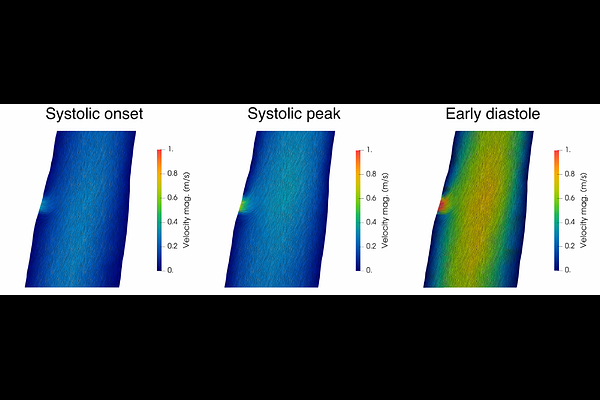Identifying myocardial regions perfused by coronary arteriesthrough detailed human microvasculature data

Identifying myocardial regions perfused by coronary arteriesthrough detailed human microvasculature data
Montino Pelagi, G.; Mackenzie, J. A.; van Bavel, E. A.; Valbusa, G.; Vergara, C.; Hill, N. A.
AbstractPurpose: clinical imaging can resolve the main coronary arteries but not the smaller side branches that penetrate the heartwall. However, precise association between the main coronary branches and the myocardial mass they perfuse is crucial to achieve a correct description of haemodynamics from the large arteries to the cardiac tissue. In this work, we use ex-vivo detailed morphometric data of human coronary microcirculation to build and validate a tool for a personalized coronary-myocardium association, and we use it in a multiscale computational model of cardiac perfusion. Methods: from the digitalized dataset of an entire human coronary microcirculation, vascular beds associated to single branches are extracted and analysed to infer patterns in epicardial branching. 3D segmentations of the coronaries with and without this information are used to generate two different myocardial subdivisions, which are compared to the one obtained from the microcirculation data. The impact on haemodynamics is assessed through computational simulations. Results: epicardial arteries exhibit characteristic patterns of transverse branching, with branching angles {approx} 90{degrees} and rate of branching, with respect to the distance along the vessel, depending on the core diameter. The addition of transverse outflows to the segmentations greatly increases accuracy in the myocardial subdivision, allowing discrimination between mass perfused by the proximal and distal arterial segments. Perfusion simulations including transverse outflows show more homogeneous blood flow across the myocardium, consistently with experimental findings. Conclusions: the inclusion of transverse outflows in 3D coronary segmentations is essential to correctly capture the coronary-myocardium association and the distribution of myocardial blood flow.